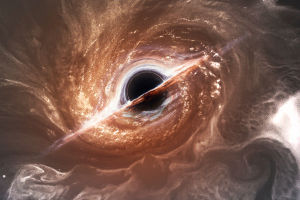We might be surprised to know that some of the most beautiful landscapes we see today—U-shaped valleys, jagged peaks, smooth rock surfaces—weren't just shaped by wind or water.
In fact, glaciers have been silently sculpting the Earth for millions of years. Let's dive into what glaciers really do beneath the surface and why they're such powerful agents of change.
What Exactly Is a Glacier's Geological Role?
Glaciers are more than just frozen water. They are dynamic systems that erode, transport, and deposit rocks and soil. These three actions—carving, carrying, and leaving behind—form the core of a glacier's geological work. While these changes happen slowly, their impact is massive and long-lasting, especially in cold mountain ranges and polar areas.
Glacial Erosion: Carving the Earth Like a Sculptor
Glaciers erode the land mainly in two ways:
1. Plucking – When meltwater from the bottom of the glacier seeps into cracks in the rocks and refreezes, it pulls chunks of rock away as the ice moves.
2. Abrasion – Rocks already embedded in the glacier scrape along the surface beneath it, smoothing and scratching it like sandpaper.
These actions shape classic glacier landforms like cirques (amphitheater-like hollows), arêtes (knife-like ridges), and horns (sharp peaks). And yes, the iconic U-shaped valleys are a glacier's signature move!
Not All Ice Is Equal
Temperate glaciers, which exist in warmer climates, are closer to melting point and have more water at their base. This means they erode much faster and deeper. Polar glaciers, which are drier and colder, move slower and erode less. That's why the geology around different glaciers can look so different.
Glacial Transport: Carrying What's Broken
Once rocks are plucked or scraped off, glaciers don't leave them behind—they carry them. We call this glacial transport, and it works like a moving frozen conveyor belt. The debris can be found:
- On the surface of the glacier
- Inside the glacier
- At the base, sliding along the bedrock
Unlike rivers, glaciers don't sort materials. They move pebbles and boulders all at once. Some of these rocks, called glacial erratics, travel hundreds of kilometers and rest in places that make us wonder how they got there.
Glacial Deposition: Leaving Behind a Frozen Legacy
When glaciers melt or retreat, they drop the debris they've carried—this is deposition. The main materials are called till, and the landforms they create include:
- Moraines: ridges made of till, either at the side (lateral moraine), at the front (terminal moraine), or beneath the glacier (ground moraine)
- Drumlins: smooth hills shaped like inverted spoons
- Kettle lakes: round depressions formed by melting ice blocks
These features help us trace the glacier's path and its melting history.
Meltwater Matters Too
When glaciers melt, they create flowing water called glacial meltwater. It forms rivers and streams that carry even more sediment, shaping valleys and plains. Sometimes this meltwater builds features like:
- Outwash plains: wide areas of sorted sand and gravel
- Eskers: long winding ridges formed by streams flowing beneath glaciers
- Varves: seasonal layers of sediment in glacial lakes—light layers in summer, dark layers in winter
These tell us how glaciers have changed over time and how climate affected them.
Why Should We Care About Glaciers?
Glaciers are like nature's construction crews—slow but incredibly powerful. They've created many of the landscapes we love and study. By understanding how they work, we also learn how Earth's surface was built, how it's still changing, and how it might change in the future.
Plus, glaciers respond quickly to climate changes. If they melt faster, they affect rivers, lakes, and sea levels. So learning about them isn't just a lesson in the past—it's a guide for what lies ahead.
Richard Alley, a renowned glaciologist, stated, "Glaciers are among the most sensitive indicators of climate change, and their movements help us understand Earth's dynamic systems."
Let's Keep Discovering Together, Lykkers!
Next time we stand before a wide mountain valley or see massive boulders lying out of place, let's remember—it might just be a glacier's ancient touch. Glaciers aren't loud, but their footprints are everywhere.
Have you spotted a glacial landform on a trip or seen a melting glacier firsthand? Share your thoughts—we'd love to hear your stories! Let's keep exploring nature's frozen wonders together!


